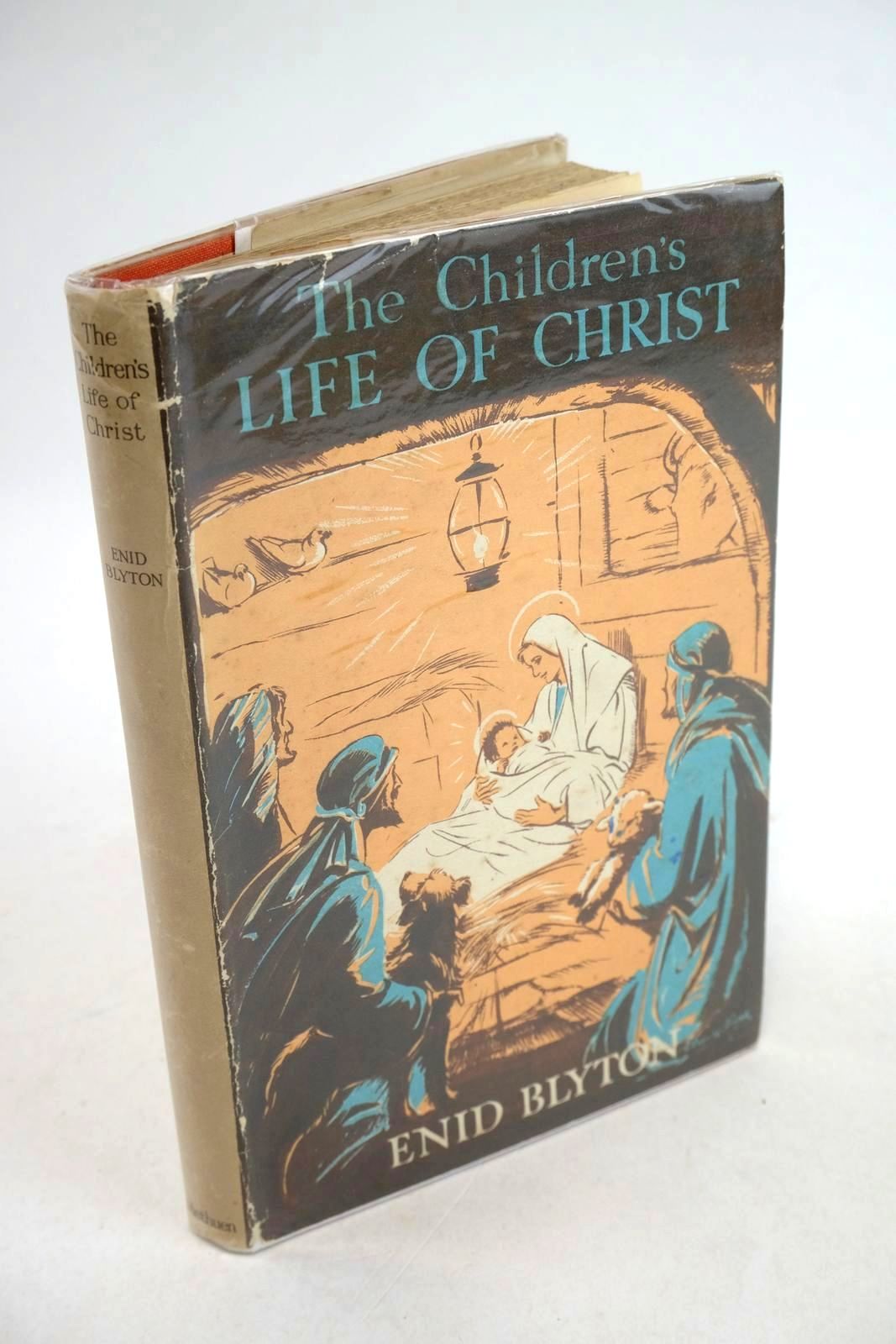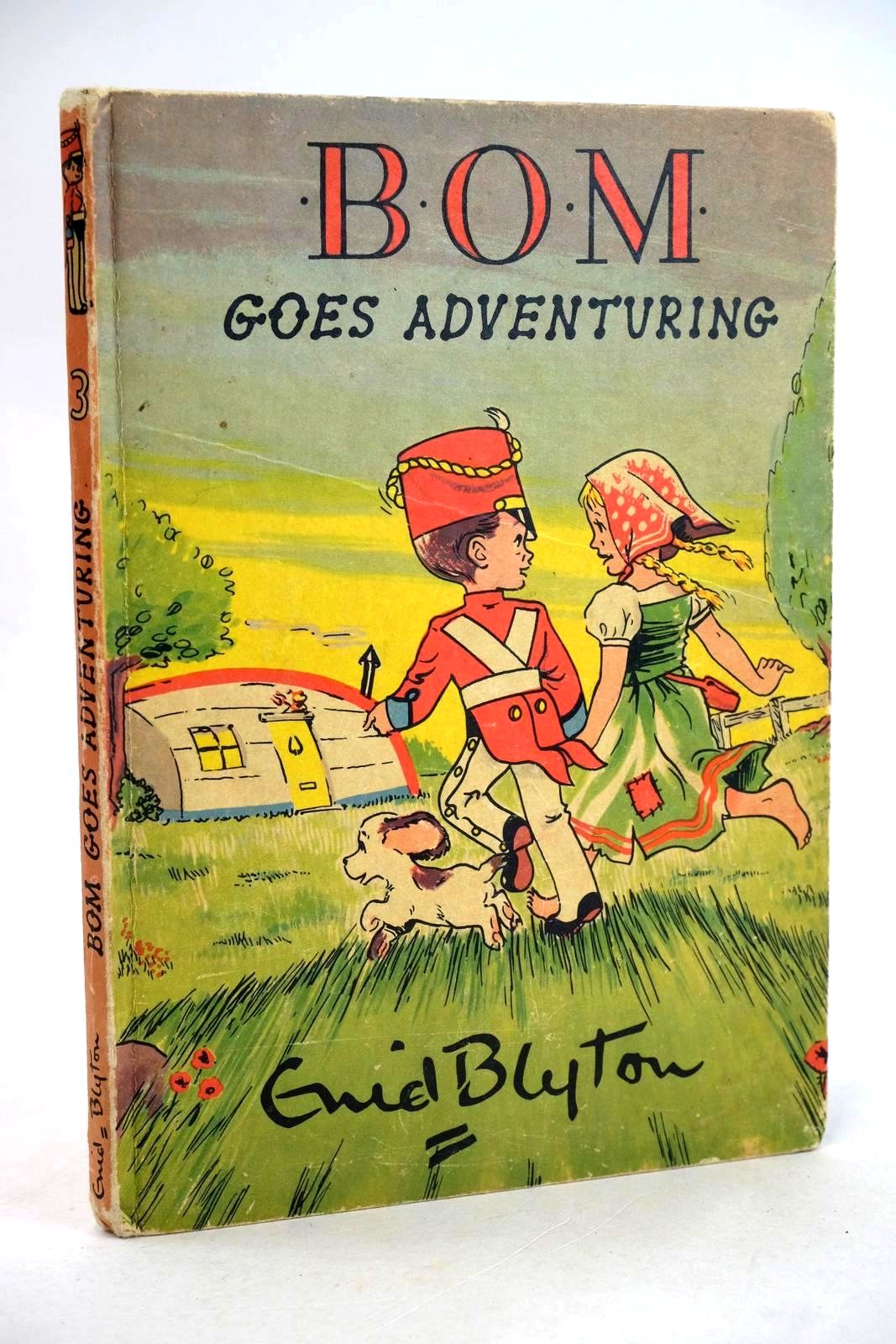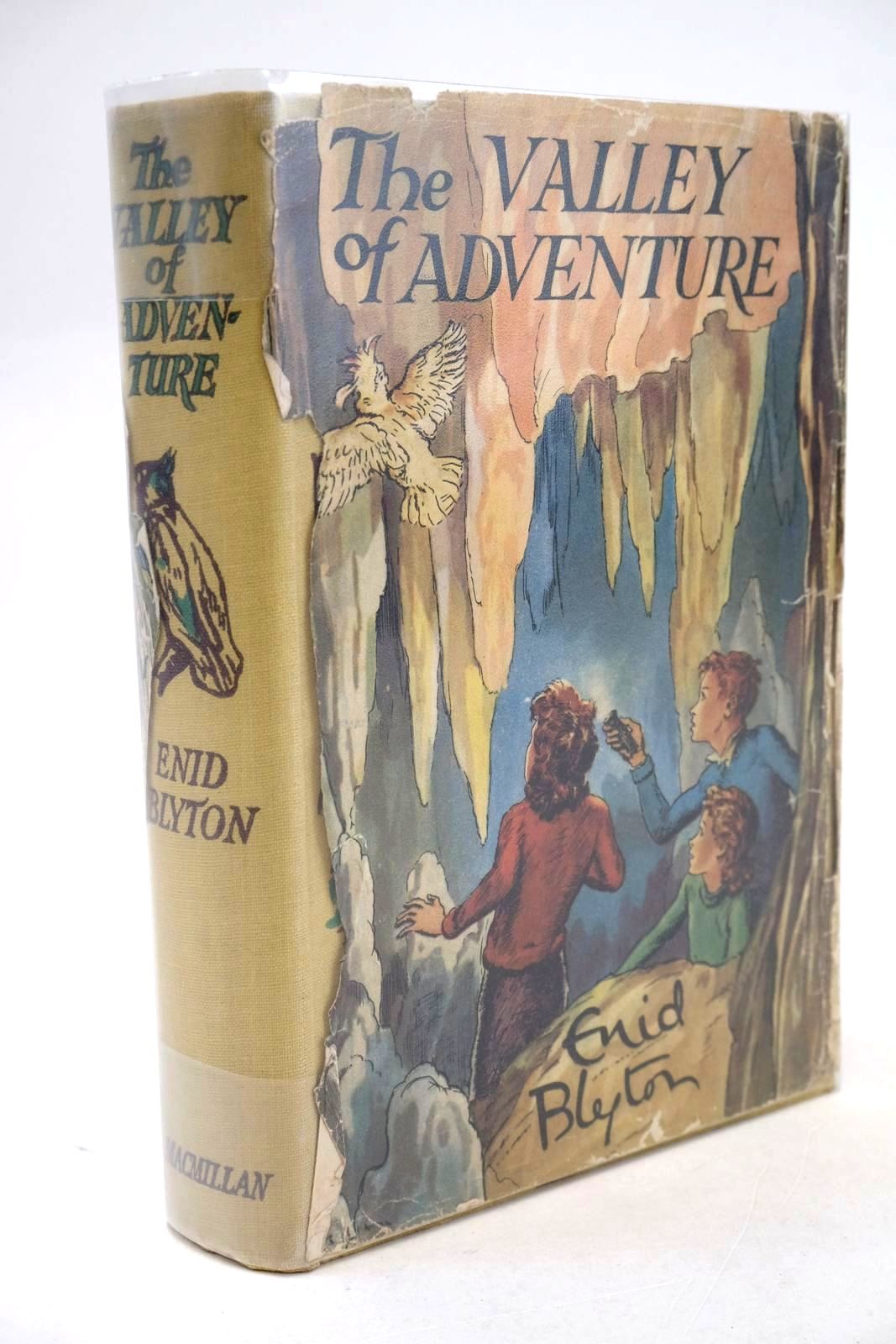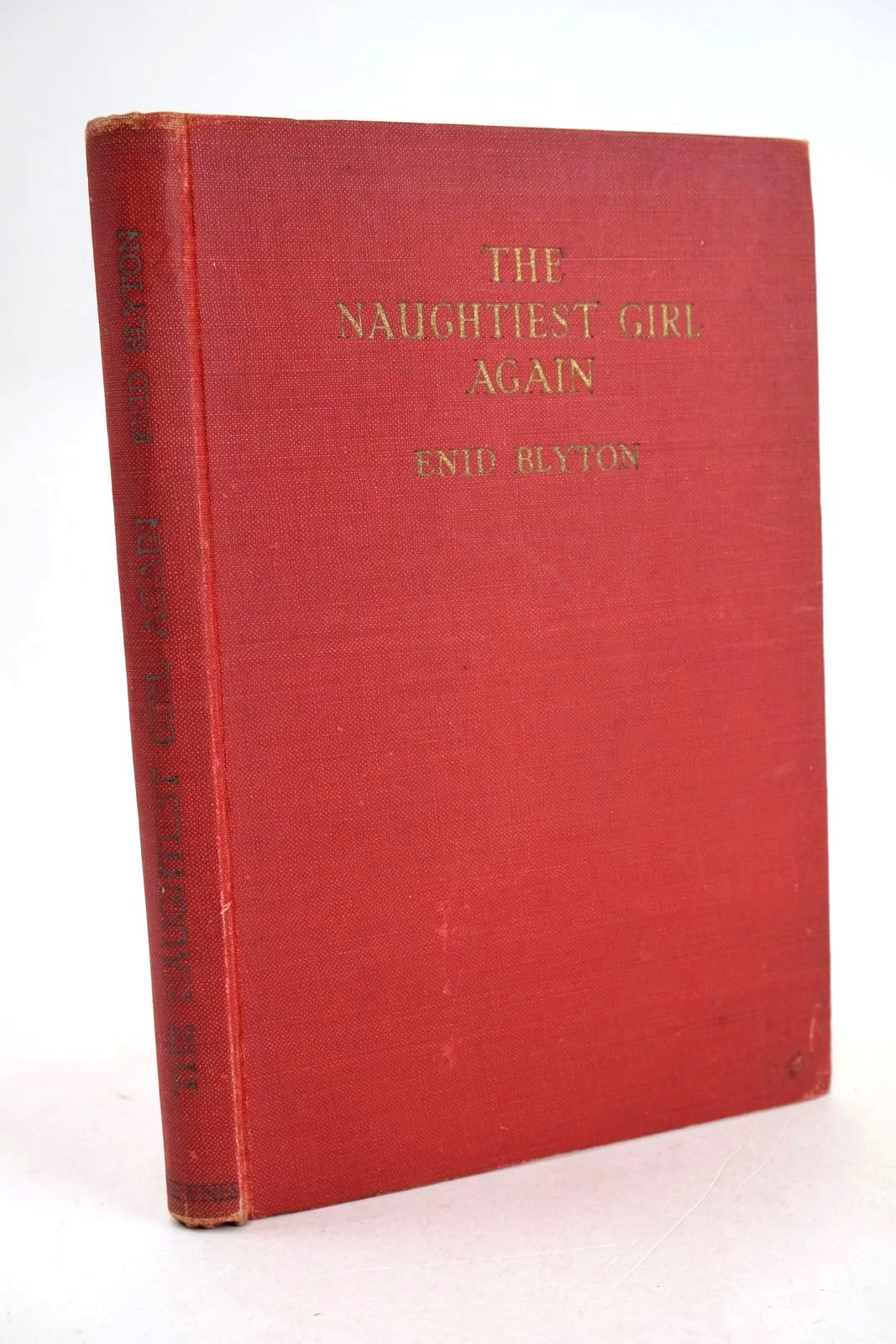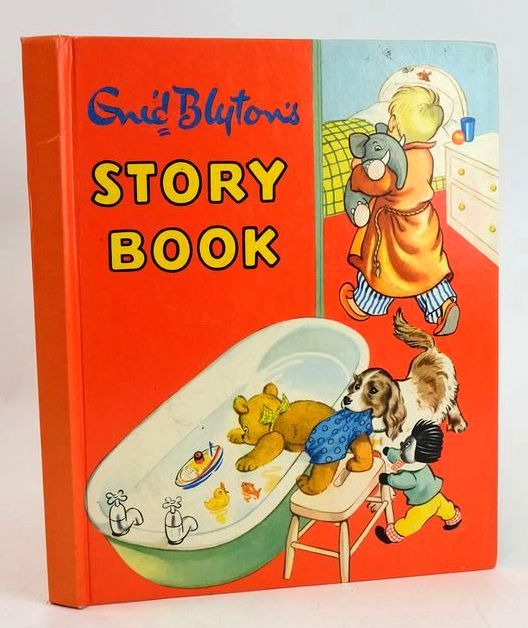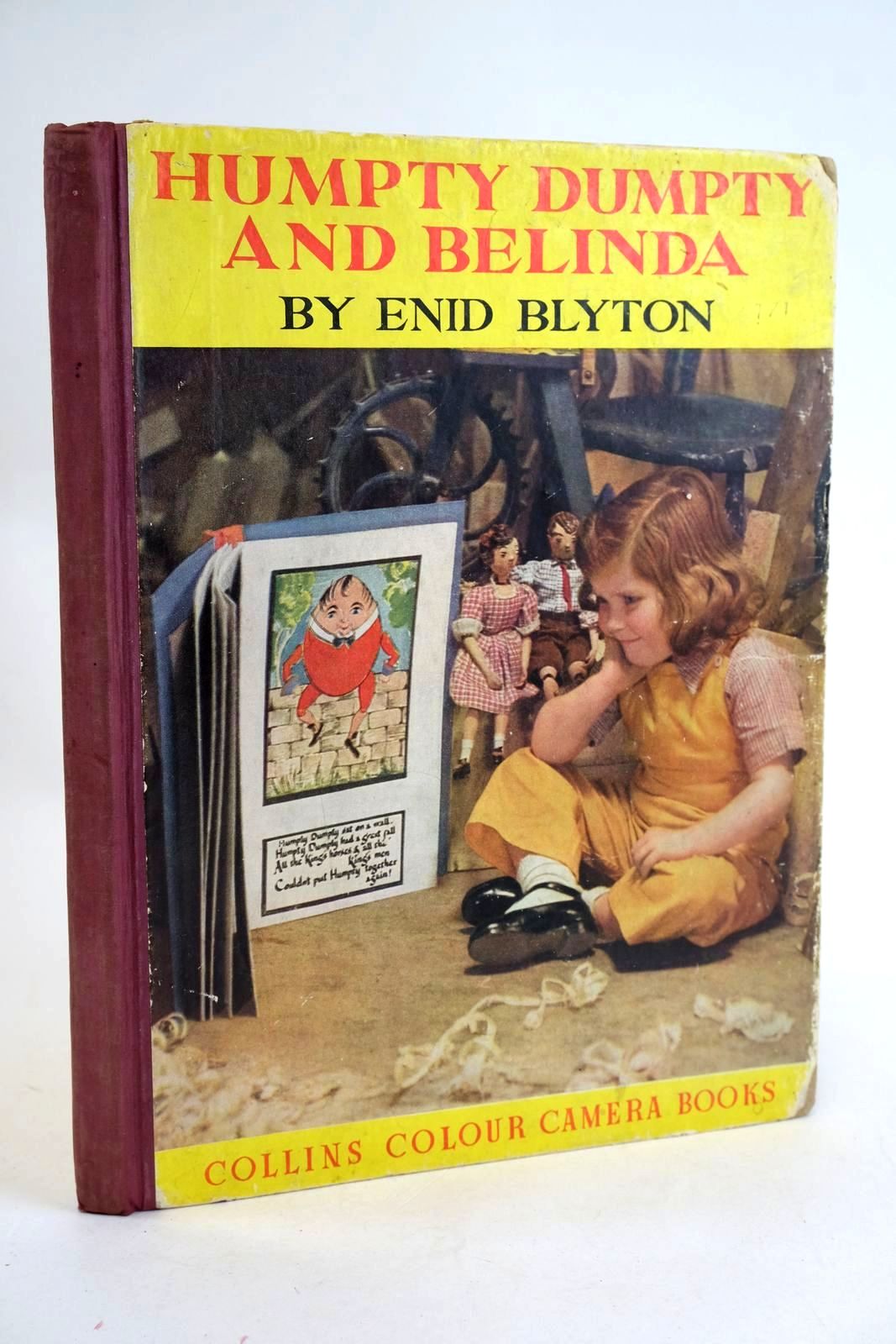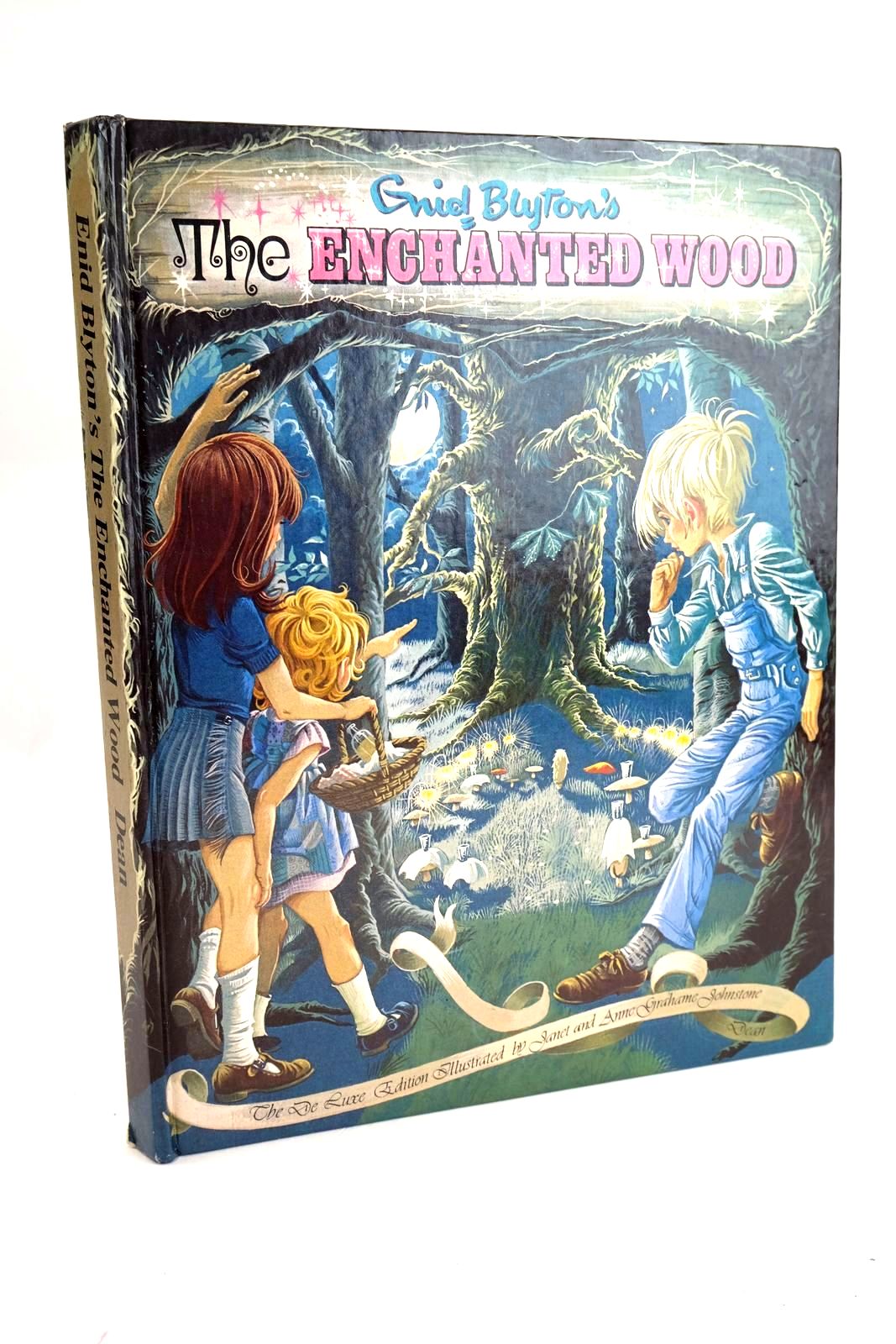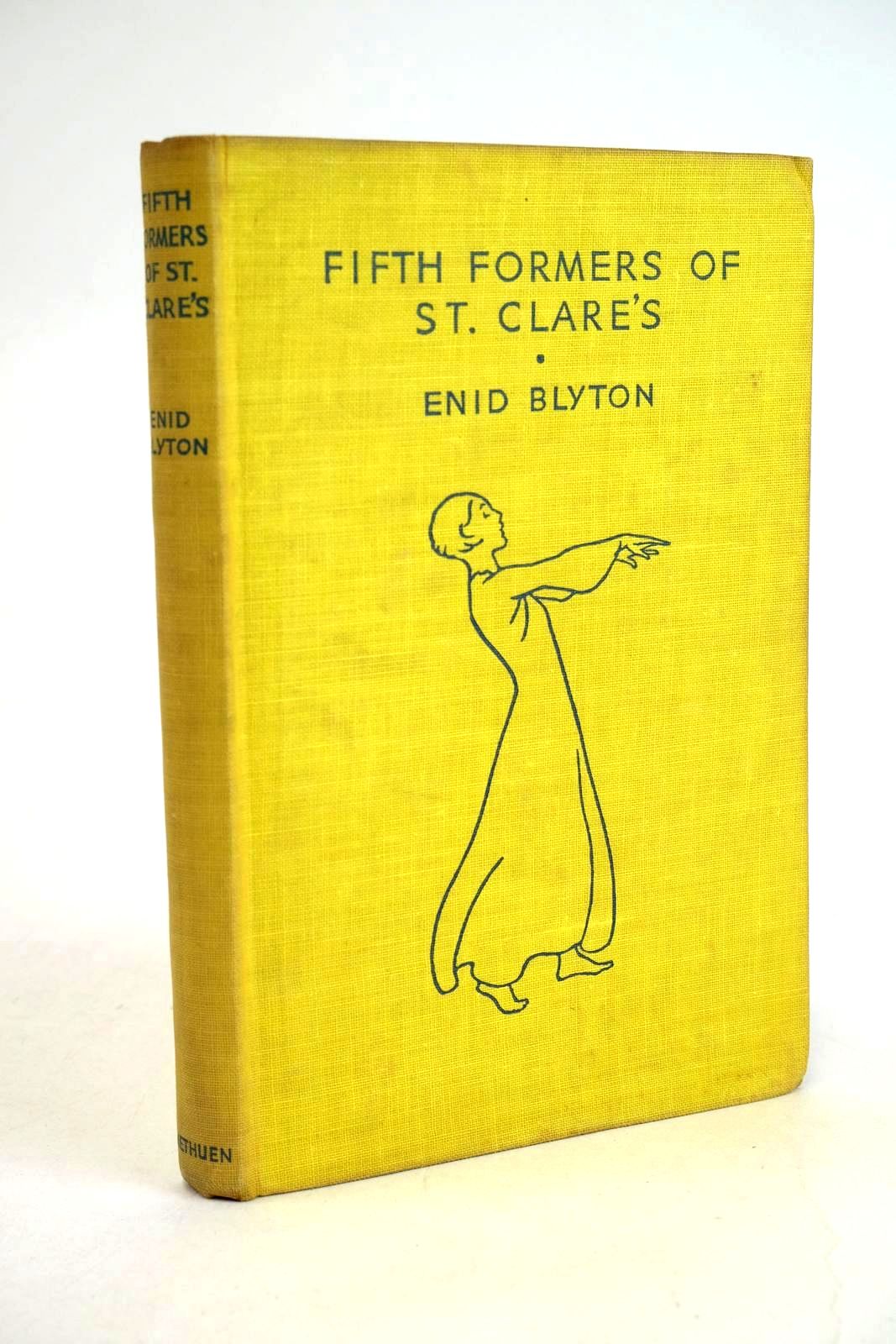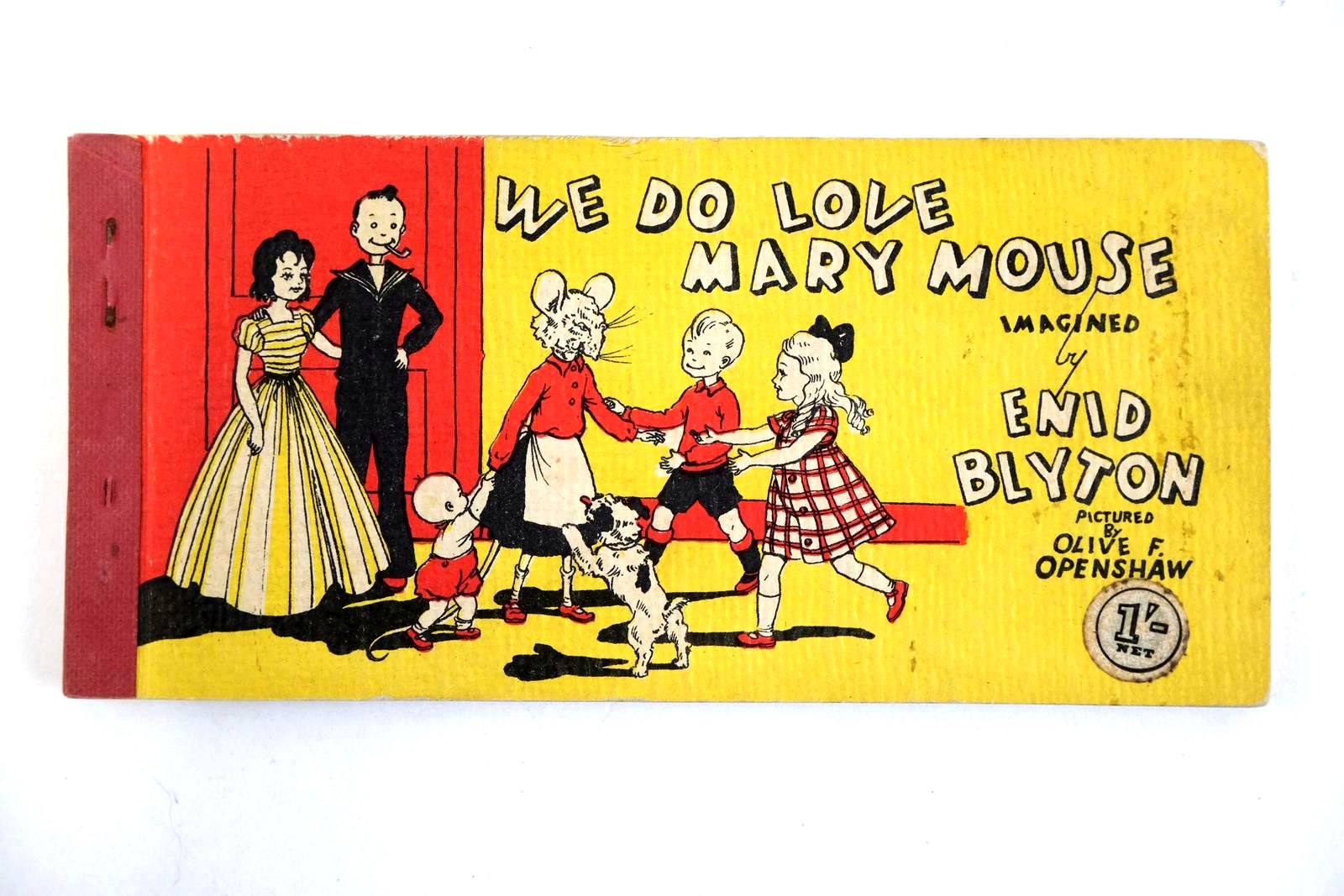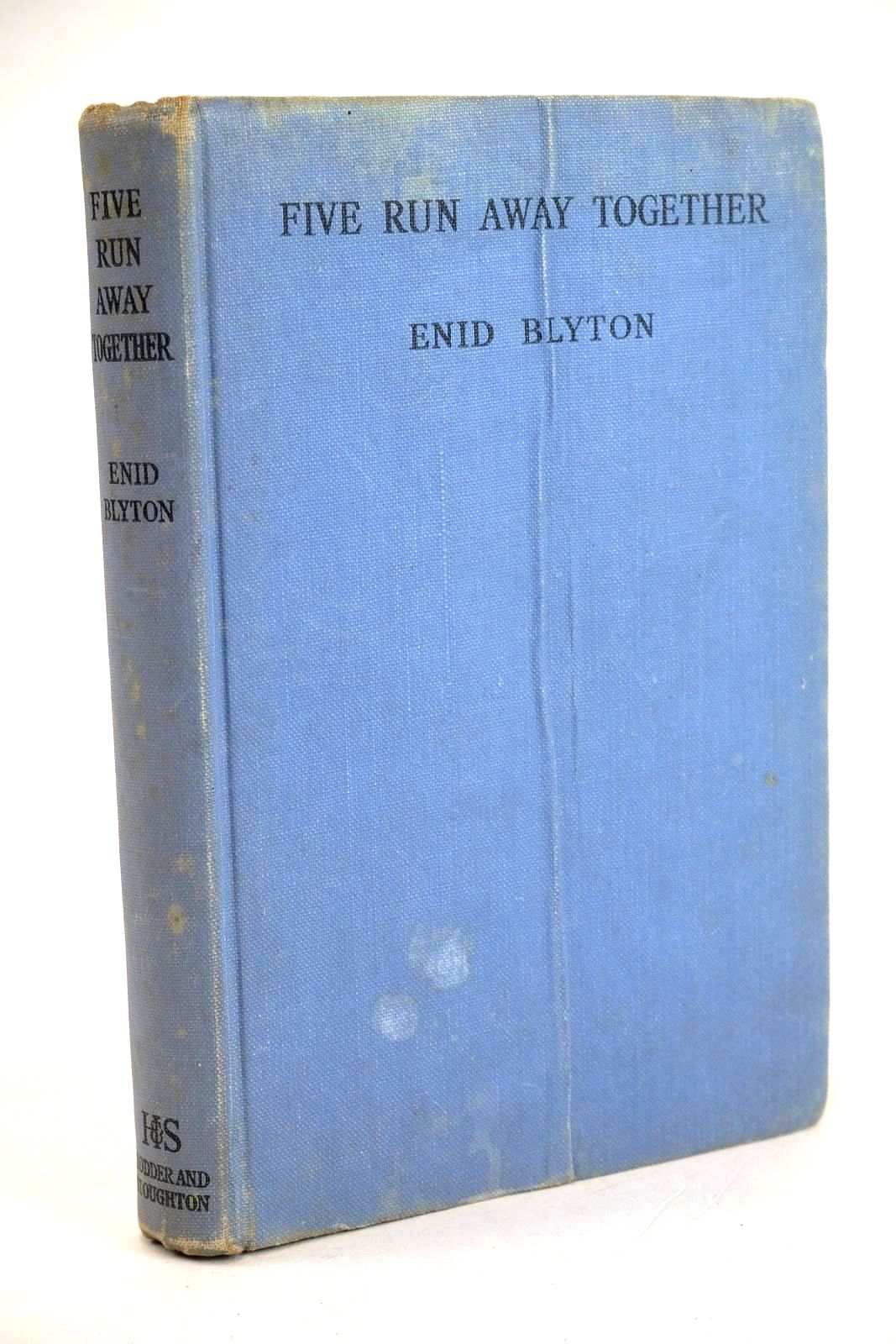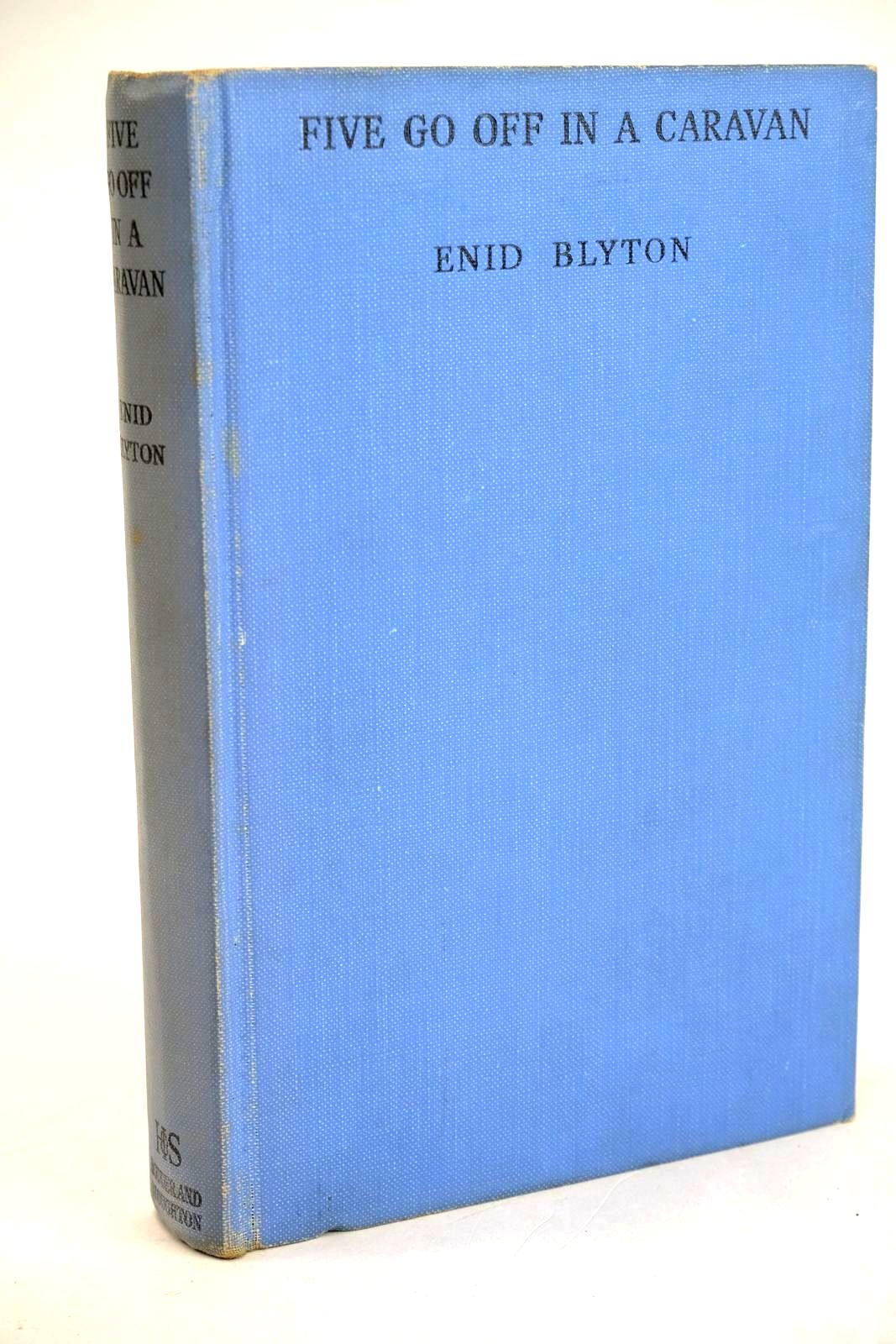THE FAMOUS FIVE SERIES: THE MYSTERY OF THE 3 EXTRA FIRST EDITION DUSTWRAPPERS. PART 4
SINGLE BLOCK DUSTWRAPPERS
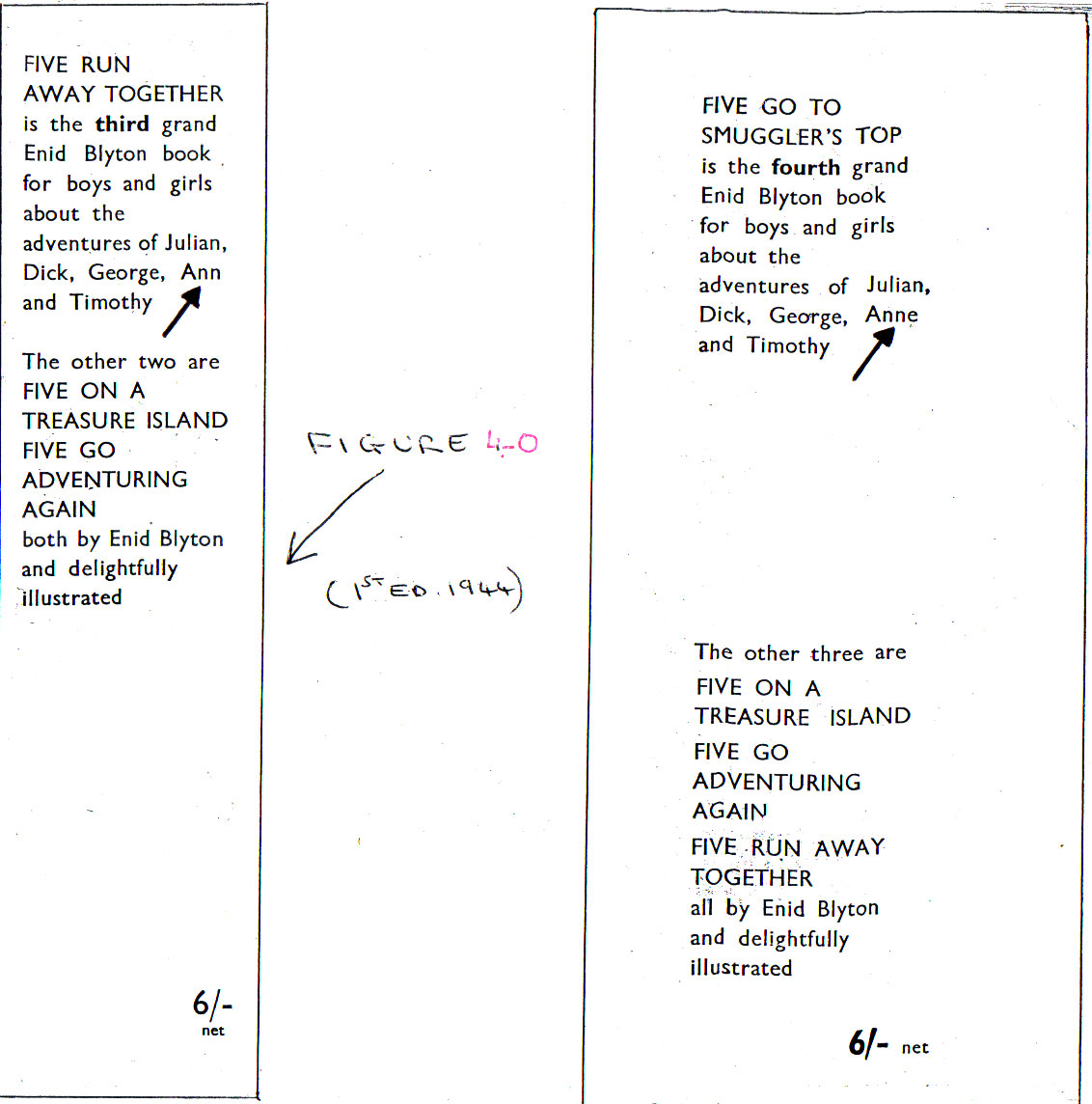

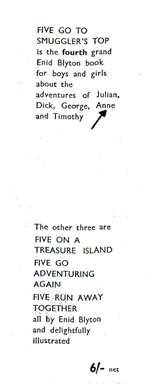
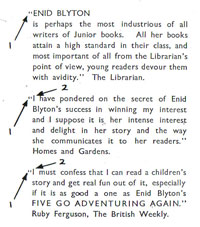

ABOVE, left to right: Figures 40 - 43
Figure 40 - Five Run Away Together 1st ed. 1944
Figure 41 - Five Go To Smuggler's Top 1st ed. 1945
Figure 42 - Five Run Away Together 1st ed. 1944
Figure 43 -Five Go To Smuggler's Top 1st ed. 1945
When all 11 SB dustwrappers were examined in detail, only 3 inconsistencies were found. These are as follows:
The word Anne is correctly spelled on the front flap of the 1st edition of Five Go To Smuggler's Top but is incorrectly spelled on the other dustwrapper.
Compare the height of the inverted commas (arrow 1) and the position of the letter 'I' (arrow 2) in the diagrams above. Note the differences. While these were the only 2 dustwrappers with these same 3 paragraphs on the rear panel, the first 2 paragraphs were also used on 3 other dustwrappers (Five Go Off In A Caravan 1st ed. 1946, Five On A Treasure Island 4th imp. 1947 and Five Go Adventuring Again 2nd imp. 1947). On the latter 3 dustwrappers the height of the inverted commas and the position of the letter 'I' is the same as that on Five Go To Smuggler's Top above. This means that 2 details on the Five Run Away Together dustwrapper are inconsistent with the other 4 dustwrappers.
NEW-STYLE DUSTWRAPPERS
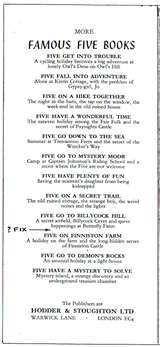
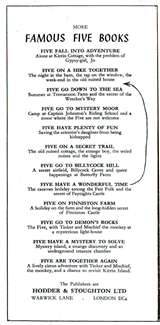
All 12 first edition dustwrappers were examined in detail together with 54 reprints from the period 1951-65. As with the SB and DB dustwrappers, some inconsistencies were found including the following examples:
EXAMPLE 1:
Five On A Treasure Island 16th imp. 1963. Figure 44 - Rear flap
H and S listed all titles in order of appearance - in this instance Five Get Into A Fix was forgotten!
EXAMPLE 2: Five Get Into A Fix 4th imp. 1964.
Figure 45 - Rear flap
Here Five Have A Wonderful Time (1952) has been incorrectly listed after Five Go To Billycock Hill (1957) instead of after Five On A Hike Together (1951).
EXAMPLE 3: Five On A Hike Together 1st ed. 1951, Five Go Down To The Sea 1st ed. 1953, Five Go To Mystery Moor 1st ed. 1954 and reprints dating from 1951 to 1954.
On the above the words More FAMOUS FIVE books on the back fold of this wrapper were printed at the bottom of the front flap. Note the inconsistency of the punctuation mark used after the word wrapper on the following examples:
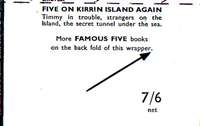
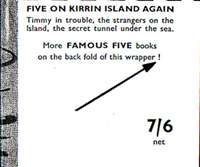

Above, left to right:
Figure 46 - Five On A Hike Together 1st ed. 1951
Figure 47 - Five Go Off In A Caravan 5th imp. 1951
Figure 48 - Five Go To Smuggler's Top 8th imp. 1954
EXAMPLE 4: New-style dustwrappers 1951-65
From 1951-65 the individual names of the FF were printed near the top of the front flap finishing with Timmy the dog. The letter 'd' in dog was inconsistently printed as either a capital letter or in lower case. Compare the examples below:
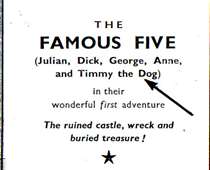
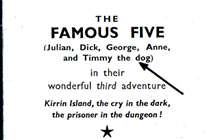
PART 5 RESULTS AND CONCLUSIONS
To enable an accurate comparison of SB, DB and new-style dustwrappers to be made, a total of 106 dustwrappers were examined in detail. A summary of the results is as follows:
(DW = dustwrapper)
|
DW Era
|
No. of DWs Examined
|
Variations
|
Total Variations Found
|
|
|
No. of Double Version DWs
|
No. of Inconsistencies
|
|||
|
SB (1942-47)
|
(All) 11
|
0
|
3
|
3
|
|
DB (1948-51)
|
(All) 29
|
3
|
20
|
23
|
|
New-style (1951-65)
|
(All) 12 1st editions
Also: 54 reprints |
0
|
8
|
8
|
If the total number of variations is expressed as a percentage of the number of dustwrappers examined, the following results are obtained:
SB = 3/11 = 27% DB = 23/29 = 79% NEW-STYLE = 8/66 = 12%
It can be seen that the highest percentage of variations occurred in the shortest (DB) era while the lowest percentage occurred in the longest (new-style) era.
When H and S changed the dustwrapper format from SB to DB in 1948 this seems to have been the trigger-point for the beginning of a troublesome three years. The fact that there was a dramatic increase from 27% to 79% dustwrapper variations following the change suggests that all was not well during 1948-51.
When the SB, DB and new-style dustwrappers are compared in terms of complexity of text layout and quantity of text, it is the DB dustwrappers which have the most complex text and also the most text. In contrast, SB dustwrappers have less text and a more simplified layout. The rear panel of new-style dustwrappers consist of a reproduction of a handwritten letter from the author together with individual illustrations of the Famous Five. Thus the only text that had to be compiled was on the flaps.
The detailed format on the rear panel of DB dustwrappers would seem to have been a problem area. Research has revealed that the majority of inconsistencies occurred on the rear panel. What is particularly notable is that despite the fact that the same lower block of text was used for all 29 dustwrappers, 5 inconsistencies still occurred.
The contrast between a labour intensive full text rear panel on the DB dustwrappers and the complete opposite on the new-style dustwrappers would suggest that H and S, by 1951, had realized a major change was needed. The much-simplified format actually used would seem to confirm this.
It should not go unnoticed however, that having provided detailed text on both flaps of DB dustwrappers to advertise other Famous Five titles, H and S continued to do this on new-style dustwrappers despite having dispensed with the full text rear panel. With sales promotion always a prime consideration this is hardly surprising.
Looking specifically now at the DB era, the obvious question that has to be asked is why was there so much deviation from the norm in such a short period of time?
It has already been shown that the double-version dustwrappers and inconsistencies can be attributed mainly to variable text layout and minor text differences. While H and S would have chosen the text content and layout, as well as illustrations, to formulate an eye-catching dustwrapper, production of the end product (and hence the double-version dustwrappers and inconsistencies) would ultimately have been the responsibility of a printer. The fact that the dustwrapper variations occurred consistently over the three year period 1948-51, would appear to dismiss any theory of a one-off printing problem. So what other problems could have occurred that resulted in this troublesome period?
The printers for H and S were Wyman and Sons Limited who had branches in London, Reading and Fakenham. As a business it is not unreasonable to assume that their main priority would have been to maintain a viable cash flow by optimizing resources and having efficient processes in place to enable a rapid response to demand. Potential problems which could have affected the day-to-day running of the business include: cash flow problems, shortage of materials, increased storage costs, the need to update old or unreliable equipment, improving or changing an inefficient process, staggering a print run for purposes of economy and also involving more than one branch to meet a high production demand on a particular book. The latter could then have led to different personnel and possibly different equipment and processes being involved. These are just a few possibilities but in reality the list could be endless due to the complexities of the printing industry at that time. Thus instead of a one-off printing problem, it seems more realistic to conclude that Wyman and Sons Limited would have had to make planned decisions in response to one or a combination of circumstances in order to maintain viability.
While this may offer a small degree of explanation for the troublesome three years, perhaps what actually happened will always remain a mystery. Only if a former employer of Wyman's was by chance to read this article and was able to put the record straight, would there be any realistic hope of revealing the true circumstances that occurred. Whatever the case, the most important information gained from this research is that for the 21 Famous Five titles, 24 first edition dustwrappers are now known to exist. Furthermore, it cannot be over-emphasized that the anomaly of the 3 extra dustwrappers is linked specifically to the double block era.
I would like to thank John Beck for providing much useful information on the printing industry together with some constructive suggestions.
Stella and Rose's Books would like to express their thanks to Mr. Lupson for his hard work in gathering the information for this scholarly article and for his kind permission in allowing us to publish it.
(Published on 2nd Mar 2014 )


